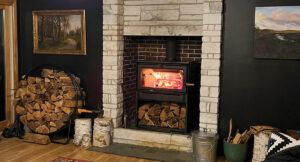 If you are going to build a new home, here are some bullet points to remember that will make your new home comfortable, energy efficient, safe and healthy for your family for years to come. Be prepared, this all takes careful planning and attention to detail from beginning to end.
If you are going to build a new home, here are some bullet points to remember that will make your new home comfortable, energy efficient, safe and healthy for your family for years to come. Be prepared, this all takes careful planning and attention to detail from beginning to end.
The three main areas you should be concerned with in order are building shell, mechanicals and ventilation. The building shell should always be your first priority. The heating and cooling systems must be sized to the heat loss and heat gain of the shell. The heating system only runs long enough to replace the amount of heat that is lost from the building shell. Ventilation plays a huge part in maintaining good indoor air quality.
Building shell
Home design – design a home that fits your family’s needs. The bigger the home the more it will cost to build, heat, cool and maintain. Less is more!
Attic insulation – have your builder frame your attic with a “Raised Heel Truss System.” It allows for full depth insulation to be installed over the exterior walls in the attic. This is important! Before installing insulation in the attic, air seal all penetrations that come up into the attic from the house (plumbing, electrical, etc.), seal all interior and exterior wall top plates with two-part spray foam, install wind-blocks and insulation chutes in the eaves, and blow in a minimum of R50 cellulose insulation, NOT fiberglass.
Exterior walls – the 2015 Energy Code requires exterior walls be insulated to R20 (usually six-inch walls) or 13+5. This insulation method calls for R13 cavity insulation and R5 foam board applied to the exterior of four-inch walls.
Basements – insulate your basement walls to an R10. It is best to apply a foam board or spray applied foam directly to the walls to prevent condensation from forming on the cold masonry walls. Apply two-part spray foam to the rim and band joists to air seal and insulate.
Windows – design fewer and smaller windows into your home – less is more. Casement windows are the most efficient type because they have a continuous gasket all the way around the window for an air-tight seal. Use windows with a U-factor of .32 or lower. U-factor is the amount of heat loss through a window.
Blower door test – as required by Illinois law, have your home blower door tested to verify the air leakage rate is less than the required five air changes per hour.
Mechanicals
Heating – a geothermal heat pump is your first choice for heating and cooling. An air source heat pump is a good second choice, especially if natural gas is not available. If you will be installing a gas furnace, choose a multi-stage 95 percent minimum efficient model with a modulating blower. Upgrade the air filter from a one-inch thick filter to a four- or five-inch filter. Do not install a humidifier on the furnace. It will not be needed.
Cooling – the most important part of air conditioning is dehumidification in the summertime. A bigger unit is not better. Make sure the system is sized correctly. It should be within 10 percent of the load of the home. If the system is too big, it will short cycle and be unable to properly dehumidify your home.
Ducts – all ducts must be sealed. Ducts located in unconditioned spaces should be sealed and insulated to an R8 minimum. If there are any ducts outside of the home (attic or crawlspace) the energy code requires a duct pressure test to be performed. All duct leakage to the outside of the home is 100 percent waste.
Water heater – install a heat pump water heater or, if gas a power-vented model, to eliminate any carbon monoxide poisoning potential from heating water.

Ventilation
Bathrooms – must have one exhaust fan that can move a minimum of 50 cfm out of the bathroom to the outside, not into the attic. Measure the air flow through all of the exhaust fans after the installation is complete.
Kitchen – duct your range hood outside to remove smells, heat and combustion by-products from cooking. Did you know a gas oven can emit more carbon monoxide into your home than your gas water heater and furnace combined?






